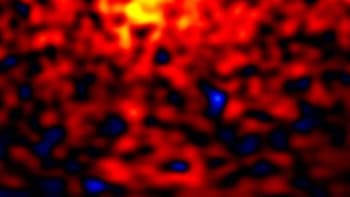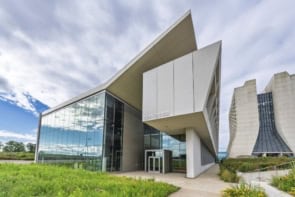Located 1100 m underground in the Boulby mine in north-east England is one of the world’s leading labs searching for the dark matter that makes up 80% of the mass of the universe.
There are two main experiments in the lab. One is ZEPLIN-III, which uses liquid xenon. As Richard Walker from Imperial College London explains in this video, when a dark-matter particle strikes a xenon nucleus, the nucleus recoils and transfers its energy to surrounding xenon atoms, which get ionized. The ions then emit photons of ultraviolet light that can be measured by photomultiplier tubes. Dark-matter particles also create an ionization signal and the nature of the particle can be determined from the difference between the two signals.
The DRIFT experiment, in contrast, uses carbon disulphide gas as the target material. A dark-matter particle colliding with a CS2 molecule can ionize it to create CS2– ions. The movement of these ions can be tracked using a 2D grid of wires, with the direction of the track giving extra information about the direction that the dark-matter particle was initially travelling. That information is useful in providing added confirmation that the particle is dark matter and comes from within our galaxy, as Sean Paling from Sheffield University and the Rutherford Appleton Laboratory explains in this video.
The problem with ZEPLIN-III, DRIFT and indeed all dark-matter experiments is that neutrons, cosmic rays and surrounding radiation – as well as dark-matter particles – can trigger a signal. The challenge for researchers is to identify the dark-matter signal among the millions of others. Most cosmic rays can be eliminated by working deep underground, while surrounding gamma radiation and neutrons (from the air, walls and rock) are blocked using high-purity shielding materials. But it is still a tall order. Not surprisingly, given the fundamental importance of dark-matter searches, new reports are often controversial in the international dark-matter community, as we reported last month.



